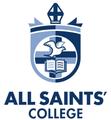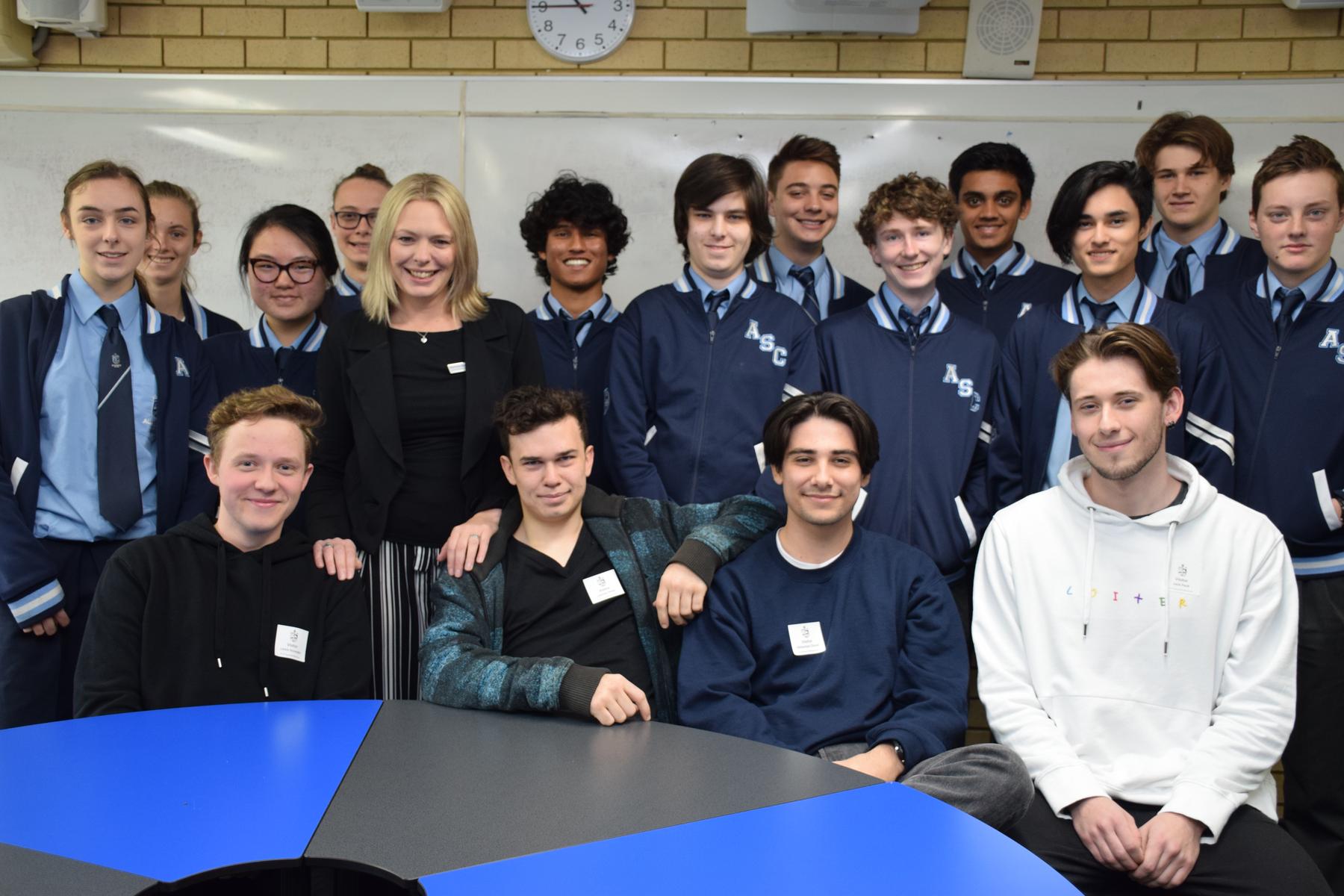DESIGN & TECHNOLOGIES LEARNING AREA

APPLIED INFORMATION TECHNOLOGY – ATAR COURSE
The development and application of digital technologies impacts most aspects of living and working in our society. Digital technologies have changed how people interact and exchange information. These developments have created new challenges and opportunities in lifestyle, entertainment, education and commerce.
Throughout the Applied Information Technology ATAR course, students investigate client-driven issues and challenges, devise solutions, produce models or prototypes and then evaluate and refine the design solution in collaboration with the client. Students are provided with the opportunity to experience, albeit in a school environment, developing digital solutions for real situations.
The practical application of skills, techniques and strategies to solve information problems is a key focus of the course. Students also gain an understanding of computer systems and networks. In undertaking projects and designing solutions the legal, ethical and social issues associated with each solution are also considered and evaluated.
This course provides students with the opportunity to develop the knowledge and skills of digital technologies. It also encourages students to use digital technologies in order to use them in a responsible and informed manner.
The Applied Information Technology ATAR course provides a sound theoretical and practical foundation, offering pathways to further studies and a wide range of technology-based careers.
Year 11
Unit 1: Media Information and Communication Technologies
This unit focuses on the use of digital technologies to create and manipulate digital media. Students use a range of applications to create visual and audio communications. They examine trends in digital media transmissions and implications arising from the use of these technologies.
Unit 2: Digital Technologies in Business
This unit focuses on the skills, principles and practices associated with various types of documents and communications. Students identify the components and configuration of networks to meet the needs of a business. They design digital solutions for clients, being mindful of the various impacts of technologies within legal, ethical and social boundaries.
Year 12
Unit 3: Evolving digital technologies
This unit focuses on the use of applications to create, modify, manipulate, use and/or manage technologies. Students consider the nature and impact of technological change and the effect this has when creating products for a particular purpose and audience.
Unit 4: Digital technologies within a global society
This unit focuses on the production of a digital solution for a particular client. Students undertake the management of data and develop an appreciation of the social, ethical and legal impacts of digital technologies within a global community.
COMPUTER SCIENCE – ATAR COURSE
The Computer Science ATAR course focuses on the fundamental principles, concepts and skills within the field of computing and provides students with opportunities to develop flexibility and adaptability in the application of these, in the roles of developers and users. The underpinning knowledge and skills in computer science are practically applied to the development of computer systems and software, and the connectivity between computers, peripheral devices and software used in the home, workplace and in education is examined. Students develop problem-solving abilities and technical skills as they learn how to diagnose and solve problems in the course of understanding the building blocks of computing.
In this course, the impact of technological developments on the personal, social and professional lives of individuals, businesses and communities is investigated. The ethical, moral and legal factors that influence developments in computing are explored so that students recognise the consequences of decisions made by developers and users in respect to the development and use of technology.
This course provides students with practical and technical skills that equip them to function effectively in a world where these attributes are vital for employability and daily life in a technological society. It provides a sound understanding of computing to support students pursuing further studies in related fields.
Year 11
Unit 1: Developing computer-based systems and producing spreadsheet and database solutions
The focus of this unit is developing computer-based systems and producing spreadsheet and database solutions. Students are introduced to the internal, interrelating components of computer-based systems in an industry context. They examine a variety of systems, build on their spreadsheet and database skills and gain an appreciation of how these concepts and technologies are used in industry.
Unit 2: Developing computer-based systems solutions and communications
The focus of this unit is developing computer-based systems solutions and communications. Students are introduced to networking concepts, as applied to industry. Through the use of algorithms, students develop programming skills. They create solutions exploring the ethical, legal and societal implications of industry-based applications.
Year 12
Unit 3: Design and development of computer-based systems and database solutions
In this unit, students understand the design concepts and tools used to develop relational database systems. They consider the complex interactions between users, developers, the law, ethics and society when computer systems are used and developed.
Unit 4: Design and development of communication systems and software solutions
In this unit, students gain the knowledge and skills to create software. They use algorithms and structured programming to design and implement software solutions for a range of problems using the Software Development Cycle. Students examine attitudes and values that lead to the creation and use of computer-based systems and their effect on society. Students consider networks, communication systems, including security and protocols.
DESIGN – ATAR COURSE
Through the contexts of Photographic and Graphic Design students develop a deeper understanding of how design works; and how ideas, beliefs, values, attitudes, messages and information are effectively communicated to specific audiences with specific intentions or purposes via visual media forms.
Design has its own set of theories and practices and incorporates a wide range of principles, methods and techniques drawn from a variety of different disciplines, such as psychology, communication studies, digital design, technical graphics, art, engineering, architecture, sociology, cultural studies, marketing and economics.
Design projects allow students to demonstrate their skills, techniques and application of design principles and processes; to analyse problems and possibilities; and to devise innovative strategies within design contexts. In this course, students develop a competitive edge for current and future industry and employment markets.
Year 11
Unit 1: Product Design
Students learn that the commercial world is comprised of companies requiring consumer products, services and brands for a particular audience. They are introduced to the concept of intellectual property. They create products/services, visuals and/or layouts with an understanding of codes and conventions. They use relevant and appropriate production skills and processes, materials and technologies relevant to the design.
Unit 2: Cultural Design
Students learn that society is made up of different groups of people who share diverse values, attitudes, beliefs, behaviour and needs and that different forms of visual communication transmit these values and beliefs. Students are encouraged to create designs that link to a culture or sub-culture and are introduced to ethical issues concerning representation. Students develop a design process with an understanding of codes and conventions. They analyse communication situations and audience. They define and establish contemporary production skills and processes, materials and technologies.
Year 12
Unit 3: Commercial Design
Students become aware that design has commercial considerations that are influenced by various stakeholders to produce products, services and brands. Commercial design is client and market driven and is a reflection of contemporary consumer demands. Students are introduced to a client-focused design brief to create a product or service. They plan, develop and analyse to create designs that reflect the client, audience, and market needs. They also consider commercial and manufacturing requirements for a real world solution, with relevant production skills and processes, materials, and technologies.
Unit 4: Influential Design
The focus of this unit is the communication of ideals, messages, information and values, to influence opinion and attitudes. Students produce products and visual layouts for specific and applied contexts with an understanding of applied semiotics and the construction of meaning. They analyse the audience in terms of empathy, profiling and stereotyping, and develop persuasive solutions using a research, testing and feedback mechanism.
FOOD SCIENCE AND TECHNOLOGY – GENERAL COURSE - delete
Food impacts every aspect of daily life and is essential for maintaining overall health and wellbeing. The application of science and technology plays an important role in understanding how the properties of food are used to meet the needs of consumers and producers. Food laws and regulations govern the production, supply and distribution of safe foods. Students develop practical food-related skills, understandings and attitudes that enhance their problem-solving abilities and decision-making skills.
In the Food Science and Technology General course, students develop their interests and skills through the design, production and management of food-related tasks. They develop knowledge of the sensory, physical, chemical and functional properties of food and apply these in practical situations. Students explore innovations in science and technology and changing consumer demands. New and emerging foods encourage the design, development and marketing of a range of products, services and systems.
Food and allied health sectors represent a robust and expanding area of the Australian and global employment markets. The Food Science and Technology General course enables students to connect with further education, training and employment pathways and enhances employability and career opportunities in areas that include nutrition, health, food and beverage manufacturing, food processing, community services, hospitality, and retail.
Students will sit and external Task set by the School Curriculum and Standards Authority. The criteria and content are set by the Authority.
A consumable charge applies to these courses. This cost will be separate to Tuition fees.
Year 11
Unit 1: Food Choices and Health
This unit focuses on the sensory and physical properties of food that affect the consumption of raw and processed foods. Students investigate balanced diets, the function of nutrients in the body and apply nutrition concepts that promote healthy eating. They study health and environmental issues that arise from lifestyle choices and investigate factors which influence the purchase of locally produced commodities.
Students devise food products, interpret and adapt recipes to prepare healthy meals and snacks that meet individual needs. They demonstrate a variety of mise-en-place and precision cutting skills, and processing techniques to ensure that safe food handling practices prevent food contamination. Students recognise the importance of using appropriate equipment, accurate measurement and work individually, and in teams, to generate food products and systems.
Unit 2: Food for Communities
This unit focuses on the supply of staple foods and the factors that influence adolescent food choices and ethical considerations. Students recognise factors, including processing systems that affect the sensory and physical properties of staple foods. They explore food sources and the role of macronutrients and water for health, and nutrition-related health conditions, such as coeliac and lactose intolerance, which often require specialised diets. Students consider how food and beverage labelling and packaging requirements protect consumers and ensure the supply of safe, quality foods.
Students work with a range of staple foods, adapt basic recipes and apply the technology process to investigate, devise, and produce food products to achieve specific dietary requirements. They evaluate food products and demonstrate a variety of safe workplace procedures, processing techniques and food handling practices.
Year 12
Unit 3: Food Science
This unit explores the societal, lifestyle and economic issues that influence food choices. Students research the effect of under-consumption and over-consumption of nutrients on health and investigate a range of diet-related health conditions that affect individuals and families.
Using scientific methods, students examine the functional properties that determine the performance of food and apply these in the planning and preparation of food products and processing systems.
Students develop their expertise with technology and communication skills to implement strategies to design food products and processing systems. They select resources to meet performance requirements and use evaluation strategies to monitor and maintain optimum standards. Students follow occupational safety and health requirements, implement safe food handling practices and use a variety of foods and processing techniques to produce safe, quality food products.
Unit 4: The Undercover Story
This unit focuses on food spoilage and contamination and explores reasons for preserving food. Students investigate food processing techniques and the principles of food preservation. They examine the regulations which determine the way food is packaged, labelled and stored and how the principles of the Hazard Analysis Critical Control Point (HACCP) system are administered and implemented to guide the production and provision of safe food.
Students investigate the food supply chain and value-adding techniques applied to food to meet consumer and producer requirements. Food choices are often determined by location, income, supply and demand and the environmental impact of food provision. Students examine influences on the nutritional wellbeing of individuals that arise from lifestyle and cultural traditions. They implement principles of dietary planning and adapt recipes and processing techniques when considering the specific nutritional needs of demographic groups.
Students apply the technology process to address a product proposal and produce a preserved food product. They justify the equipment, resources and processing techniques used, and evaluate sensory properties. Students show the use of the preserved food product in another food product.


